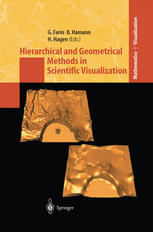

Most ebook files are in PDF format, so you can easily read them using various software such as Foxit Reader or directly on the Google Chrome browser.
Some ebook files are released by publishers in other formats such as .awz, .mobi, .epub, .fb2, etc. You may need to install specific software to read these formats on mobile/PC, such as Calibre.
Please read the tutorial at this link: https://ebookbell.com/faq
We offer FREE conversion to the popular formats you request; however, this may take some time. Therefore, right after payment, please email us, and we will try to provide the service as quickly as possible.
For some exceptional file formats or broken links (if any), please refrain from opening any disputes. Instead, email us first, and we will try to assist within a maximum of 6 hours.
EbookBell Team

4.4
62 reviewsThe nature of the physical Universe has been increasingly better understood in recent years, and cosmological concepts have undergone a rapid evolution (see, e.g., [11], [2],or [5]). Although there are alternate theories, it is generally believed that the large-scale relationships and homogeneities that we see can only be explainedby having the universe expand suddenlyin a very early “in?ationary” period. Subsequent evolution of the Universe is described by the Hubble expansion, the observation that the galaxies are ?ying away from each other. We can attribute di?erent rates of this expansion to domination of di?erent cosmological processes, beginning with radiation, evolving to matter domination, and, relatively recently, to vacuum domination (the Cosmological Constant term)[4]. We assume throughout that we will be relying as much as possible on observational data, with simulations used only for limited purposes, e.g., the appearance of the Milky Wayfrom nearbyintergalactic viewpoints. The visualization of large-scale astronomical data sets using?xed, non-interactive animations has a long history. Several books and ?lms exist, ranging from “Cosmic View: The Universe in Forty Jumps” [3] by Kees Boeke to “Powers of 10” [6,13] by Charles and Ray Eames, and the recent Imax ?lm “Cosmic Voyage” [15]. We have added our own contribution [9], “Cosmic Clock,” which is an animation based entirely on the concepts and implementation described in this paper.